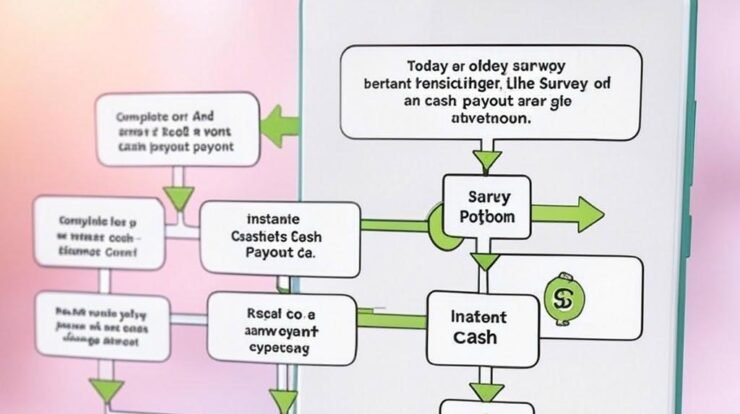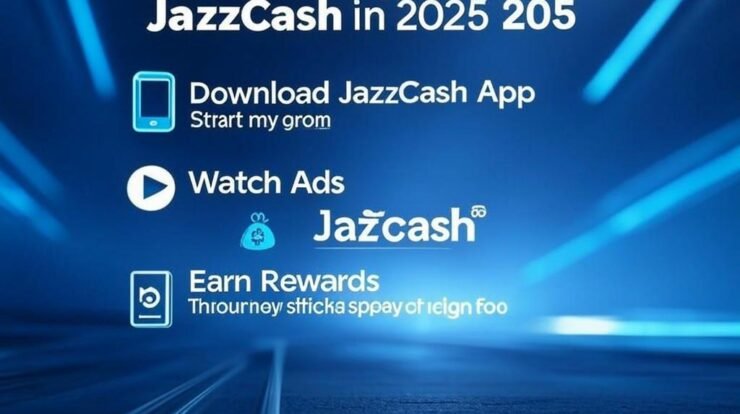YouTube Shorts has taken the internet by storm. These bite-sized, vertical videos—capped at 60 seconds—are designed to grab attention in a world where scrolling is second nature. But beyond the viral dances, quick tutorials, and funny skits, a burning question lingers for creators: Can you actually earn money from YouTube Shorts? The short answer is yes, but the path to profit isn’t as simple as posting a clip and watching the cash roll in. As someone who’s spent years navigating the digital content landscape, I’m here to break down the realities of monetizing YouTube Shorts, share practical strategies, and highlight what it takes to turn those quick videos into a legitimate income stream.
Understanding YouTube Shorts and Their Place in the Creator Economy
YouTube Shorts launched in 2020 as YouTube’s answer to TikTok and Instagram Reels. These short-form videos are optimized for mobile viewing, leveraging the platform’s massive audience to drive engagement. With over 2.7 billion monthly active users on YouTube as of 2023, the potential reach is staggering. Shorts are prominently featured on the YouTube app’s homepage, giving creators a shot at viral exposure. But reach doesn’t automatically translate to revenue. To understand how to make money with YouTube Shorts, you need to grasp the platform’s monetization mechanics and the broader creator economy.
The appeal of Shorts lies in their accessibility. Anyone with a smartphone and a YouTube account can create one. They’re quick to produce, require minimal editing, and cater to audiences with short attention spans. However, monetizing them involves navigating YouTube’s Partner Program, ad revenue structures, and alternative income streams. Let’s dive into the specifics.
YouTube Shorts Monetization: The Basics
To earn directly from YouTube Shorts, you need to be part of the YouTube Partner Program (YPP). As of February 2023, YouTube expanded the YPP to include Shorts-specific monetization, making it easier for creators to earn from short-form content. Here’s what you need to qualify:
- 1,000 subscribers: This is the baseline for joining the YPP.
- 4,000 valid public watch hours in the last 12 months (for long-form videos) or 10 million valid public Shorts views in the last 90 days. The Shorts-specific view requirement is a game-changer, as it lowers the barrier for creators focusing on short-form content.
- A linked AdSense account: This is how YouTube pays you.
- Compliance with YouTube’s policies: Your content must adhere to community guidelines and copyright rules.
Once you’re in the YPP, YouTube Shorts can generate revenue through ads that appear between Shorts in the Shorts Feed. Unlike long-form videos, where ads are embedded within the content, Shorts ads are served in a swipeable feed format. Creators earn a share of the revenue from these ads, pooled into what YouTube calls the “Shorts Revenue Share.” The split is 45% for creators and 55% for YouTube, which is slightly less favorable than the 55/45 split for long-form video ad revenue.
How Much Can You Earn?
Earnings from YouTube Shorts vary widely. The revenue per thousand views (RPM) for Shorts tends to be lower than for long-form content, often ranging from $0.05 to $0.20 per 1,000 views, depending on factors like audience demographics, advertiser demand, and content niche. For example, a Short that garners 1 million views might earn $50 to $200. While that might not sound life-changing, creators who consistently post high-performing Shorts can accumulate significant views over time.
Let’s break it down with a hypothetical scenario. Suppose you post one Short daily, and each averages 100,000 views. That’s 3 million views per month. At an average RPM of $0.10, you’d earn about $300 monthly. Scale that to 10 million views, and you’re looking at $1,000. These numbers are rough estimates—your actual earnings depend on your audience’s location (advertisers pay more for viewers in countries like the U.S.), engagement rates, and the seasonality of ad budgets.
Read more: Side Hustle Success: How to Earn Extra Income While Working Full-Time
Beyond Ads: Diversifying Your Income from YouTube Shorts
While ad revenue is the most direct way to earn from Shorts, it’s not the only path. Savvy creators use Shorts as a funnel to drive traffic to other income streams. Here are some proven strategies:
1. Drive Traffic to Long-Form Content
Shorts are a fantastic discovery tool. A viral Short can introduce your channel to new viewers, encouraging them to check out your long-form videos, which typically have higher RPMs due to mid-roll ads and longer watch times. For example, a fitness creator might post a 15-second workout tip as a Short, then direct viewers to a 10-minute workout video in the description or comments. This strategy boosts watch hours, helping you meet YPP requirements and increasing overall revenue.
2. Brand Sponsorships
Brands love Shorts because they’re quick, engaging, and shareable. Once you build a following, companies may approach you to promote their products in your Shorts. Sponsorship deals can range from $100 for micro-influencers to thousands for creators with large, engaged audiences. The key is to create authentic content that aligns with your niche. For instance, a beauty creator might showcase a skincare product in a 30-second routine, seamlessly integrating the brand without alienating viewers.
3. Affiliate Marketing
Affiliate links are a goldmine for Shorts creators. By including affiliate links in your video descriptions or pinned comments, you can earn commissions when viewers purchase products through your links. Amazon’s Associate Program is a popular choice, but niche-specific programs (like fitness equipment or software tools) often offer higher commissions. A tech creator, for example, could post a Short reviewing a gadget and link to its purchase page, earning a cut of each sale.
4. Merchandise and Digital Products
Shorts can showcase your personal brand, driving sales of merchandise like t-shirts, mugs, or digital products like eBooks and courses. A cooking creator might post a Short demonstrating a recipe, then promote their cookbook or online cooking class. Platforms like Teespring or Gumroad make it easy to set up and sell products directly from your YouTube channel.
5. Super Thanks and Channel Memberships
YouTube’s Super Thanks feature allows viewers to tip creators for standout content, including Shorts. Channel memberships, available once you hit 1,000 subscribers, let fans pay for exclusive perks like badges or members-only videos. While these features are less common for Shorts-focused channels, they can add up for creators with loyal audiences.
Crafting Shorts That Maximize Earnings
Not all Shorts are created equal. To maximize your earning potential, you need to create content that hooks viewers, aligns with YouTube’s algorithm, and appeals to advertisers. Here’s how to do it:
1. Hook Within the First 3 Seconds
The Shorts Feed is a relentless scroll. If your video doesn’t grab attention immediately, viewers will swipe past it. Start with a bold statement, a surprising visual, or a question that piques curiosity. For example, a travel creator might open with, “This hidden beach is cheaper than your coffee!” paired with stunning visuals.
2. Optimize for Engagement
YouTube’s algorithm prioritizes videos with high engagement—likes, comments, shares, and watch time. Encourage interaction by asking questions or including calls-to-action like “Comment your favorite tip!” or “Save this for later!” Videos that keep viewers watching until the end (high retention) are more likely to be recommended, boosting your views and earnings.
3. Leverage Trends and Niches
Trending topics—like viral challenges or seasonal events—can skyrocket your Shorts’ visibility. Use tools like Google Trends or YouTube’s search bar to identify what’s hot in your niche. For example, during the holidays, a DIY creator might post a Short on “3 quick gift-wrapping hacks,” capitalizing on seasonal interest.
4. Keep It Authentic
Audiences can spot inauthenticity a mile away. Whether you’re sharing a life hack or promoting a product, ensure your content feels genuine. Authenticity builds trust, which translates to higher engagement and more opportunities for sponsorships or affiliate sales.
5. Post Consistently
Consistency is key in the Shorts game. The more you post, the more chances you have to go viral. Aim for at least 3–5 Shorts per week, but prioritize quality over quantity. Each video should be polished, with clear audio, good lighting, and a compelling message.
Read more: SmartBloks review – Unleashing the Power of Modular Tech in 2023
Challenges and Pitfalls of Monetizing YouTube Shorts
While the potential to earn from YouTube Shorts is real, it’s not without hurdles. Here are some challenges to watch out for:
- Low RPMs: As mentioned, Shorts generally earn less per view than long-form videos. You’ll need high view counts to see significant income from ads alone.
- Algorithm Dependence: YouTube’s algorithm can be unpredictable. A video that goes viral one week might flop the next, making consistent earnings tricky.
- Content Saturation: With millions of creators posting Shorts, standing out is tough. You’ll need to carve out a unique voice or niche to avoid getting lost in the noise.
- Time Investment: While Shorts are quick to produce, building a monetizable channel takes time. Hitting the 10 million Shorts views or 4,000 watch hours required for YPP can take months of consistent effort.
Real-Life Success Stories
To illustrate what’s possible, let’s look at a few creators who’ve turned YouTube Shorts into income streams:
- @CookingWithLynja: Lynja, a home cook with a quirky personality, used Shorts to share quick recipes, amassing millions of views. Her Shorts drove traffic to her long-form content and secured brand deals with companies like Tastemade.
- @ZachKing: Known for his mind-bending visual effects, Zach King adapted his magic tricks to Shorts, gaining millions of followers. His Shorts funnel viewers to his merchandise and sponsored content, creating a diversified revenue stream.
- @TheFitnessMarshall: This dance fitness creator posts high-energy Shorts that showcase quick workouts. His viral Shorts have led to partnerships with fitness brands and a thriving online class platform.
These creators show that with creativity, consistency, and strategic thinking, YouTube Shorts can be more than a hobby—they can be a business.
Read more: How to Make Money Copywriting: A Personal Journey to Success
Tips for Long-Term Success
To sustain and grow your earnings from YouTube Shorts, consider these long-term strategies:
- Analyze Your Analytics: Use YouTube Studio to track which Shorts perform best. Look at metrics like view duration, traffic sources, and audience retention to refine your content.
- Build a Community: Respond to comments and engage with your audience to foster loyalty. A dedicated fanbase is more likely to support your monetization efforts through Super Thanks or memberships.
- Experiment and Adapt: The digital landscape evolves fast. Test new formats, topics, and posting schedules to stay ahead of trends.
- Invest in Quality: As your channel grows, consider upgrading your equipment (like a better microphone or camera) to enhance production value. High-quality Shorts stand out in a crowded feed.
The Bigger Picture: Is YouTube Shorts Worth It?
So, can you earn from YouTube Shorts? Absolutely. But it’s not a get-rich-quick scheme. Success requires a mix of creativity, persistence, and strategic planning. For creators willing to put in the work, Shorts offer a low-barrier entry point to the creator economy, with opportunities to earn through ads, sponsorships, affiliate marketing, and more. The key is to treat Shorts as part of a broader content strategy, using them to build your brand and drive traffic to higher-earning opportunities.
Whether you’re a budding creator or a seasoned YouTuber, Shorts are a powerful tool to reach new audiences and diversify your income. Start small, experiment often, and stay true to your voice. With time and effort, those 60-second clips could become a meaningful part of your financial journey.






